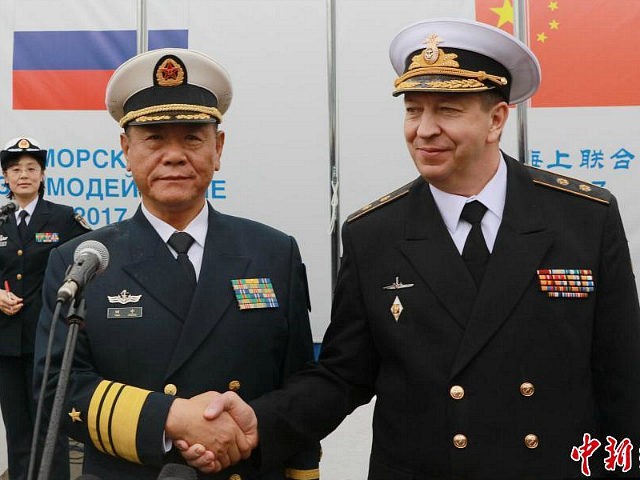China will soon be holding a week-long joint naval exercise with Russia, including a debut appearance from the Hefei, one of the most advanced warships in the Chinese Navy.
The most remarkable aspect of these exercises, however, is their location: the Baltic Sea. China’s ships are fairly literally sailing halfway around the world to get there.
CNN quotes the Russian Ministry of Defense stating that the exercises will include anti-submarine warfare and air defense drills, working from a headquarters in Kaliningrad, which happens to be located between nervous NATO allies Poland and Lithuania.
The Chinese flotilla was obliged to pass through the North Sea and the English Channel, which made several NATO countries feel obliged to send their own warships to escort it.
“By sending its most advanced guided-missile destroyers, China is expressing its sincerity to Russia and also sends a strong signal to other countries who plan to provoke us,” said a naval expert quoted by China’s Communist Party organ, the Global Times.
The Global Times claimed that the purpose of the drill was to train for protecting cargo ships as part of China’s initiative to rebuild the fabled “Silk Road” trade route. Piracy has not been much of a problem in the Baltics since the 14th Century, although enterprising Somalis took a stab at bringing it back a few years ago.
The Hefei is not the type of ship one would send to chase of Somali pirates in speedboats. It is China’s answer to the famed Arleigh Burke-class destroyers of the U.S. Navy, equipped with both surface-to-air and ship-to-ship missiles, anti-submarine torpedoes, close-in weapon systems, and advanced radar capability. It has only been operational since 2015, the third of China’s new Type 052D destroyers.
Analysts told CNN that China is looking for other nations to recognize its navy as a global force, for both military and diplomatic reasons, since the world’s heavyweight navies like to use port calls by top-of-the-line warships as diplomatic instruments. The People’s Liberation Army Navy had a busy summer, from live-fire exercises in the Mediterranean to opening its first overseas base in Djibouti.
China also wants to underscore its support for Russia, which it feels has been unfairly harassed by the U.S. and Europe for its adventures in Eastern Europe and Syria.
“The Baltic Sea has turned from a strategic buffer zone to the first defense line of Russia’s national security due to the eastward expansion of NATO and the EU after the end of the Cold War,” said another Global Times piece on the Baltic drills, firmly embracing Russia’s view of NATO as the aggressors in Eastern Europe.
The Global Times also looked forward to the next step in Russian-Chinese naval cooperation, as joint exercises move from the Baltics to the Sea of Japan and Sea of Okhotsk. The Communist paper makes a point of complaining about the U.S. deployment of its THAAD anti-missile system in South Korea, blaming America for “escalation of the North Korean nuclear crisis.
“Within the current Northeast Asian security framework, either China or Russia alone can’t act as a counterbalance to the fan-shaped security structure with the US at its core, bolstered by many alliances formed after WWII. The point of China-Russia joint military exercises lies in their desire to demonstrate the determination of their joint efforts to maintain regional balance and strategic stability,” the Global Times argues.

COMMENTS
Please let us know if you're having issues with commenting.